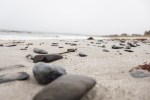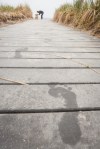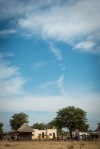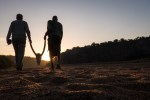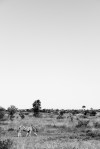 I have an idea.
I have an idea.
It’s one I’ve been batting around for weeks, something I’ve been brainstorming with friends and trying to figure out how to bring to fruition. It’s pretty simple, but it has roots: I want to use the outdoor industry to change the world. I want to use the outdoors to sell, but not products. I want to sell things currently struggling to make themselves marketable: to use the cultural cache of rock climbing, skiing, surfing and #vanlife to push a conversation about the environment, about climate change, about the plastics ending up in our oceans, the glaciers melting on mountaintops, rising seas and corals slowly bleaching on reefs. I want to use the culture of outdoor athletes to sell more than just jackets. I want it to make a difference for more than just some corporate bottom line. I want it to save the world.
Tall order, I know. But the outdoors sells. In this era of the Instafamous, of Jeep and Subaru ads, Prana and Patagonia catalogs, Redbull and Rossignol videos, this can work. These brands all count on the cultural hook outdoor sports offer to sell their products, so couldn’t the outdoors also sell itself? Couldn’t we use its cool-factor to remind people the world is changing, that it is itself threatened? Couldn’t the outdoors sell something invaluable for once?
I turned down an actual job in the outdoor industry to try this. I want people to hear the word “Patagonia” and think of a place, not a company, even if the company is a responsible one. It’s a concept I would hope even Patagonia would be on board with.
I have long ties to the outdoor industry. I’ve worked in retail, am a guide and athlete and I’ve done stints working as a sales rep. That last one was the hardest—selling outdoor gear. I remember listening to conversations about how some customer would buy whatever was the nice this winter, that a new set of skis had to go with a new kit. The job was to push people to buy a new jacket so they could get into the mountains, even if they already had a perfectly serviceable jacket already.
I couldn’t do it. That was not why I fell in love with the mountains. The outdoors were a step away from consumer-driven culture, a haven in an economy all about growth. Backpacking, hiking and climbing took me away from the blaring images of marketers, away from the constant stream of advertisements. There was something beautiful in that.
But the outdoor world has been co-opted; now it’s part of the pitch. The allure of #VanLife is the adventure, but it’s mixed up with a trendy lifestyle image used to sell things. A huge part is about the gear, about tricking out your rig. Van aficionados pour over websites and forums discussing how best to achieve their van dream, sinking money into solar panels that match the stove. Keeping up with the Joneses moved to four wheels.
And it’s not just the vans. I know people who revel in the breadth of their climbing rack. Others boast about their gear closets and post pictures to Instagram. The bikes, boards, kites and ropes are called toys, and he who owns the most toys wins, even if you barely have the time to use any of it. There are outdoor magazine articles and Instagram feeds dedicated to this stuff, and people surf the pictures from their office computers.
The dedicated outdoors people I know, meanwhile, don’t care about gear. They use whatever is around. These are guides, pro climbers, the people who make their living in the outdoors; they aren’t fussy about carabiners or climbing ropes because anything will do. Whatever is cheap and will get them outside is what they want. To them climbing is about action, not accessories, and as a result they spend more time and less money on the thing they love.
But that vision for the outdoors isn’t sexy, and it isn’t what dominates the outdoor industry today. The conversation is all about what is newest and latest and lightest. What is the best gear of this year?
Who cares? What piece of gear actually gets you outside? Your feet mostly, something you already own. Maybe you need a bike or a paddleboard, but what about all the knickknacks they sell alongside them? Some basics are usually useful, but most are useless. They are ways to make money off your desire and your passion. Most outdoors people wind up with a closet overflowing with stuff they never use, stuff they bought because they heeded the whisper of consumerism, stuff that could have been turned into time off, time outside, or plane tickets had it never been purchased. But modern American outdoorspeople are caught in the same consumer frenzy as other sectors, and they buy in. We buy in. We let ourselves get pulled back, let the consumerist urges we originally sought to escape return. They never let us stray far. They waited for us to put down our guard, and then they pounce.
That was feeling I had when I was offered the sales job, and it’s why I turned it down. It just didn’t fit. Selling to get outside stands exactly opposite of why I go outside.
That feeling was present this Sunday as well. It was my first real dive in the Pacific: Point Lobos, south of Monterey. A daytrip alongside a handful of other freedivers, all of them more experienced than me. I showed up with a surfing wetsuit, $5 dive fins I bought off Craigslist and a cheap mask and snorkel. It’s the stuff I’ve used since the day I started a year ago, some I accrued, some I sought out, some I borrowed. It is cheap, and it works. Everyone else had $200 freedive fins, top of the line low-volume masks and dedicated 7mm freedive suits. I got suited up, no gloves and no booties, and attached my bright yellow snorkel to my mask. The crew looked at me and laughed. “You did a course with those?” my friend Mika said, pointing to my short little U.S. Diver fins. “They let you do that?”
“Sure,” I said. “Why not?”
“They’re not freedive fins,” he said. “If you can keep up you must be twice the diver of any of us.”
He was right, and I was not. I watched the other three speed beneath the surface with each drop, kick after kick sending gushes of water upwards. Their equipment far outpaced mine, and they got deeper because of it.
But it didn’t matter. I wasn’t there to set records, I was there to explore the Pacific, to see the kelp forests and learn more about freediving. I was there to meet new people and to keep practicing this sport I’d discovered a year before, to get a glimpse of the underworld aquarium we call the ocean, to take a step outside of climate controlled and see the world in its raw state. There was no race. I wanted to be outside, in the water, and $5 fins were fine for that.
“I love the gear,” Mika told me later. “Half the point of any sport is getting the gear.”
Consumerism has found us. Going into the outdoors is no longer an escape.
But the originals, guys like Yvon Chouinard, Ed Hillary, Royal Robbins, they didn’t buy in. They may have made millions from the outdoors, but their own adventures were about making due. They figured out how to survive and adventure with what they had, never bought their way in. There wasn’t even the option in those days. They pressed things not intended for adventure into service, made them fit the fight. The first climbs of Royal Robbins were with a clothesline. The first ascents of Yosemite bigwalls required pitons carved out of stovelegs. Those were the hours of adventure, the moments of invention.
Not that we need to go back to stovelegs though. Without modern ice tools, screws, ropes and gear I would probably quit climbing—the risks those pioneers took were too much for me. Were I to attempt a grade five ice route with the equipment of their first ascent I would cower in fear. I know that. It is part of what makes original ascensionists so inspiring—they did it, and they did it with less. They did it when the oceans of rock above them were still a mystery, when there was no guidebook, no topos. They have shown us what original mettle looks like.I can only chase their accomplishments. There is something beautiful about that, something the advances technology can never equal.
I will eventually get freedive fins, and I will eventually get a dedicated freedive suit. But they will always be secondary, the necessary accessories rather than the point. Consuming is a part of existing—the lion eats, as does the mouse, and we are no different. It is neither good nor bad. But it is a pursuit in itself that remains without a purpose. Consuming for the point of consuming—I strove to escape. I went into the woods so I could live deliberately. And it has followed me here.
So I want to turn it around. I want the world to look at beauty I discovered in mountains, on cliffs, on the ocean and in the woods and see what I see. I want people to see the rawness of it and instead of thinking about buying think about saving. Think about the places so precious and rare, so tenuous and so perfect. I want them to think about those places as places, not brands. I want them to want the places to survive more than they way the goods to explore them.
I believe that is what the outdoors truly sells. I believe there is a market for that too.

 I’m along to shoot video and document their efforts, working with them on their research and writing blogposts along the way. The conversations we are having are enlightening, and the living conditions of families who sell some of the highest quality coffee in the world are astonishing.
I’m along to shoot video and document their efforts, working with them on their research and writing blogposts along the way. The conversations we are having are enlightening, and the living conditions of families who sell some of the highest quality coffee in the world are astonishing.
 I have an idea.
I have an idea.
 Nothing gets accomplished alone.
Nothing gets accomplished alone. A few weeks ago I came up with an idea. It’s an idea bigger than I am, one that has to do with writing, reporting, adventure, the environment, the future of the Earth and the human race. It’s an idea I don’t want to let go of, one I don’t want to die like so many ideas before it. It’s an idea I need help with. So while it was still fresh, instead of rushing headlong into it I did something simple: I picked up the phone. I called my friends.
A few weeks ago I came up with an idea. It’s an idea bigger than I am, one that has to do with writing, reporting, adventure, the environment, the future of the Earth and the human race. It’s an idea I don’t want to let go of, one I don’t want to die like so many ideas before it. It’s an idea I need help with. So while it was still fresh, instead of rushing headlong into it I did something simple: I picked up the phone. I called my friends.
 In the days immediately following 9/11, President George W. Bush visited the Islamic Center of Washington D.C. Standing before a lectern, sandwiched between a dark-skinned bearded man and a woman wrapped in headscarf, he addressed cameras directly.
In the days immediately following 9/11, President George W. Bush visited the Islamic Center of Washington D.C. Standing before a lectern, sandwiched between a dark-skinned bearded man and a woman wrapped in headscarf, he addressed cameras directly.






